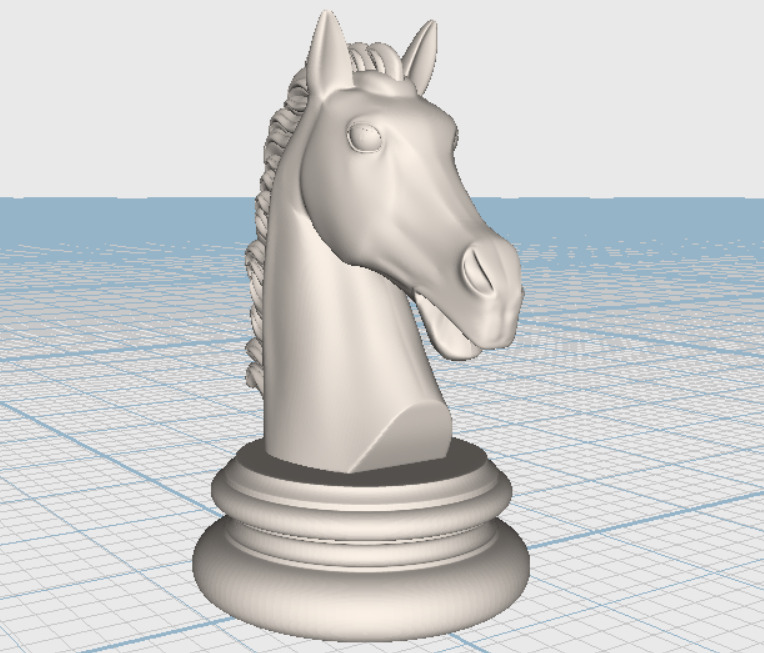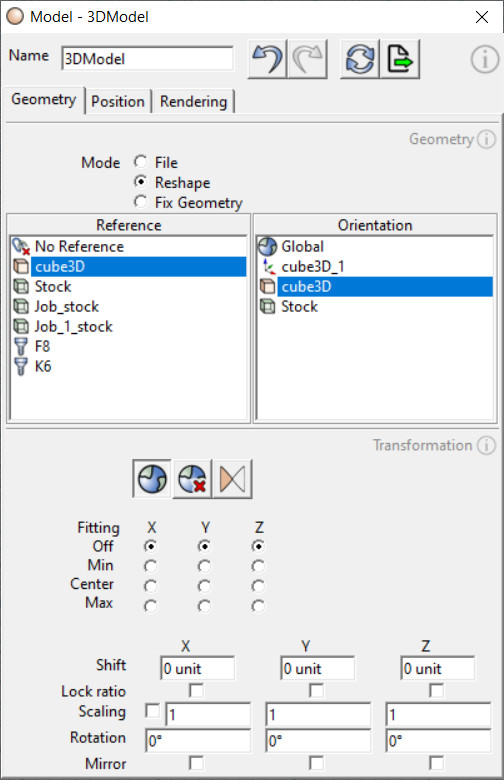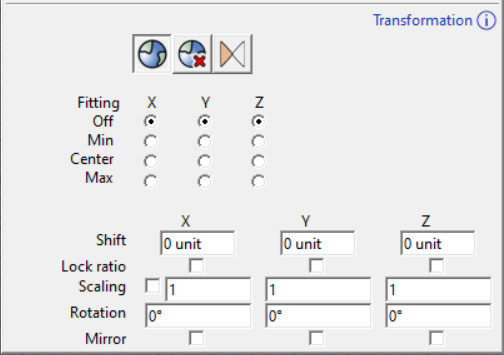 © vxcraft.com
© vxcraft.com3D model <PRO>
A 3D model is a three-dimensional representation of an object composed of triangles.
A 3D model can have any level of detail and size. During NC calculation, the model is transferred to the voxel grid, which reduces the level of detail depending on the project resolution. Unlike heightmap models, which define their geometry by a 2D graphic with height information, 3D models have a complete geometry with all degrees of freedom.
Geometry mode
A 3D model can be created, loaded or generated by various methods. In the following section all available modes are explained:File
The 3D model is created from an imported STL file. The following tools and settings are available:Import 3D model
Opens the file manager to import a 3D file. The chapter "System" explains the file formats in more detail.Reload 3D model data
Re-reads the already imported file from the saved file path and updates the 3D model.
Detach file path
This function removes the linked file path from the object, but keeps the data of the last loaded file.
 © vxcraft.com
© vxcraft.comReshape
The 3D model is formed from one or more existing models.
Hinweis
In this mode, the position and orientation of the object are fixed by the selected references and cannot be changed directly. In order to be able to edit the position, the geometry created from the references can be fixed using the "Fix geometry" mode.
Tip
Tool models can also be converted into a 3D model.
Geometry reference
One or more models can be selected to be merged into a single 3D model.
Orientation
The orientation of the resulting 3D model is aligned according to the selected reference. The position and orientation of the model are determined by the selected reference.
Fix geometry
Detaches the model from its geometry and position references.
When the "Fix Geometry" mode is activated, the geometry and the position of the model are fixed. The dependency on geometry and position references is removed, making the model independent and allowing it to be positioned freely.
Lock geometry data
Locks the geometry data of a 3D model to protect the data from unwanted readout (export lock)
If a lock is set, it cannot be released again. A model with locked geometry data cannot be exported and also the geometry mode cannot be changed anymore. In addition, it cannot be selected by another 3D model as a geometry reference. Nevertheless, it is possible to apply a transformation to a locked geometry, and the object can still be positioned freely.
3D model transformation
The transformation changes the position of the model origin and the geometry of the 3D model relative to the model origin.
 © vxcraft.com
© vxcraft.comThis function allows you to adjust the shape and size of the model without affecting its position in 3D space. It is important to distinguish the transformation from the positioning of the model: While the transformation affects the geometry of the model and, if necessary, moves the model origin, the settings in the "Position" tab change the location of the model origin in 3D space.
A commonly used transformation is the scaling of the 3D model to bring it to a specific dimension.
Transformation Tool
Enables/disables the transformation for the object.
Reset transformation
Resets the transformation to the default values.
Invert surfaces
Inverts the surfaces of the 3D model.
This feature can be useful when an imported model has the surface normals misaligned, causing the inside to be rendered instead of the outside. Inverting the faces changes the orientation of the normals so that the inside of the faces faces out and vice versa. This function only has a visual effect and does not affect the geometry of the model.
Fitting
Customizes the origin of the 3D model along the X, Y, and Z axes based on the size of the model geometry.Four options are available for each axis to set the origin: Off, Min, Center and Max.
- Off: No change in model origin.
- Min: Sets the origin of the model to the position of the minimum extension of the geometry along the axis.
- Center: Positions the origin of the model at the center of the geometry along the axis.
- Max: Sets the origin of the model to the position of the maximum extension of the geometry along the axis.
This function allows you to precisely adjust the origin of the model, for example to align it on a specific plane or axis, depending on the size and extent of the model geometry. The "Move" function is deactivated for the respective axis when the origin of the model is set by "Fitting".
Shift
Moves the origin of the model in the X, Y and Z axes.
Lock ratio
Locks the scaling ratio for the X, Y and Z axes to preserve the proportions of the model.
Scaling
Scales the 3D model to the desired size. The scaling mode can be switched between "scaling factor" and "absolute scaling" with the checkbox.
Rotation
Rotates the 3D model by the specified number of degrees in the X, Y and Z axes.
Mirror
Mirrors the geometry along the specified axis.
